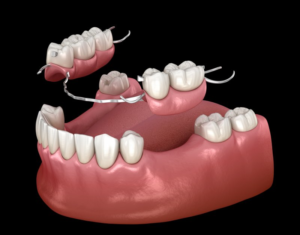Patriot Garage Door can add curb appeal, make it easier to park a car and improve insulation. They also come in a wide variety of materials, styles and sizes.

Choose a company that has a good reputation, he says. Ask for references and photos of recently completed jobs. Check out a firm’s warranty terms, too.
As wheeled vehicles began to replace horse-drawn carriages, people realized they needed a way to store and protect their cars from rainwater and snow. The original solution was to shelter them in barns alongside their horses, but this didn’t solve the problem of odor or limited space. Eventually, garages were built for the sole purpose of housing automobiles.
As people started building garages, they began to experiment with different designs of doors. Initially, they worked like traditional barn doors and hung from above. However, these doors were difficult to open and would often get stuck if blocked by snow or debris. Additionally, they required a lot of space and were prone to damage from wear and tear.
The first major upgrade to the garage door came in the 1920s when motorized openers were introduced. Previously, when you wanted to open or close the garage door, you had to drive up, roll down your window, reach out through the glass and manually operate the switch inside the car. With the introduction of these motorized openers, a switch box was placed in the driveway, and underground electrical wiring ran from this to the garage door.
In 1921, C.G Johnson patented the upward acting sectional garage door that folded up and parallel to the roof of the garage, providing a much more practical and convenient solution. This invention was a major milestone for the garage industry and the company he founded, Overhead Door Corporation, continues to grow as an international business today.
A few years later, Johnson came up with another game-changing innovation, the electric door opener, to assist customers who had trouble lifting the heavy up-and-over garage doors. This invention was a major milestone for his company, as well, and set the stage for the modern garage door industry.
In addition to the advancements made in opener technology, one of the lesser-known garage door facts is that the safety sensors that keep you and your family safe have also come a long way. Earlier models of these safety features used static codes that were transmitted by a remote control and could be easily hacked by unauthorized individuals. Today, these safety sensors use rolling codes that change after each opening and closing operation to prevent unauthorized access to your garage.
Materials
The material of a garage door affects the style, durability and cost, as well as the overall maintenance requirements. Some materials are better suited to specific climates than others. Wood doors, for instance, require regular recoating to prevent decay; steel and fiberglass need repainting if they rust; glass doors need washing to remove grime. The material of a garage door also impacts its ability to resist air infiltration and thermal transmission.
Aluminum Garage Doors
Aluminum is a low-maintenance material for garage doors, and its natural resistance to corrosion makes it an ideal choice in coastal or wetter areas. Its light weight is easy on springs and tracks, but it may not be a good option for colder environments because it doesn’t provide much insulation. This material is available in a variety of styles and colors, and some models can be fitted with windows that allow more natural light to enter the garage, giving your home a modern aesthetic.
Wood Garage Doors
Wood garage doors are a beautiful, high-end option that adds to the value of your home and complements any architectural style. They are expensive but last a long time and are energy efficient, saving you money on your heating and cooling bills over the years. They are also durable and offer a classic look that will never go out of style.
Faux Wood Garage Doors
Faux or composite wood garage doors are a stylish, affordable option for homeowners looking to add a more natural-looking exterior to their homes. They are made of panels with different patterns that can be mixed and matched to create a one-of-a-kind aesthetic, and they come in a wide range of finishes and colors to match any home’s color palette.
Fiberglass Garage Doors
A lightweight, highly stylish material for garage doors, fiberglass is an excellent choice for coastal properties or wetter regions. However, it doesn’t provide much insulation and is vulnerable to rust or corrosion from prolonged exposure to sunlight. Fiberglass garage doors are also available in a variety of colors and can be designed with windows that allow more natural light to enter your garage, bringing a bright, inviting aesthetic to your space.
Styles
Choosing the right garage door style is an important part of creating your dream home. The best option depends on your preferences and the design of your house. If durability is your top priority, steel and vinyl doors offer a durable build and good resistance to damage. On the other hand, if you’re looking for a high-end look, consider a wood or wood composite door that will add to your home’s curb appeal.
Overhead garage doors, also known as sectionals, are the most common garage door on the market and can be operated manually or with an automatic opener. They rest horizontally above your garage opening and can be molded to fit any major American architectural style. These types of garage doors are also available in a wide range of styles and materials, so you can find the perfect fit for your home.
Carriage house garage doors are a favored choice for traditional homes and recreate the look of old-fashioned barn doors. They’re a great complement to colonial and Victorian architecture, as well as farmhouse and ranch-style houses. For a more contemporary look, consider modern carriage garage doors that feature tempered glass panels (clear, frosted, or tinted) encased in aluminum frames.
A garage door’s outer layers can be made from steel or other metals with a variety of finishes and overlays to create different looks. Foam cores help improve insulating values and make these doors strong enough to withstand harsh climates. Steel is the most popular option because it offers a high level of durability and strength with an affordable price tag.
If you want a classic, single-panel garage door, consider steel or vinyl options with window designs and hardware to suit your house’s aesthetic. These doors are a great choice for any type of home and allow for more design customizations like pops of color, larger windows, or different hardware. Single-panel garage doors are also less expensive and require fewer maintenance services than other types of garage doors.
Installation
Garage door installation can be a complex task for novice homeowners. Not only do the springs have to be properly installed, but if they are not, the entire system can quickly become dangerous. It is also important that the door is correctly aligned with the tracks and opening, as even small misalignments can cause erratic operation and premature wear and tear on components. Additionally, garage doors are often very heavy, making them difficult to maneuver. Unless you are an accomplished DIYer, garage door installation work is best left to professionals.
Material
The type of material your door is made from will have the greatest impact on overall cost. For example, a standard paneled door will be less expensive than a French or carriage door. However, if you want windows, patterns or other decorative elements, expect your costs to rise significantly.
Clearance
The amount of space required to mount a sectional garage door depends on the size and type of door and opener you choose, as well as the installation requirements for each. For example, you will need more head and shoulder clearance to install a sectional door than you would with a single-panel door.
Motor
An electric motor is used to help you open and close the garage door. Depending on your needs and budget, you can opt for a quiet, efficient DC motor or an AC induction model. Some models come with a built-in battery backup system for use during power outages.
Controls
If you’re looking for a more modern touch, consider an option that includes Wi-Fi integration. This allows you to monitor and operate your door from any location with access to a smartphone or tablet. Some of these systems can even be integrated with vehicle systems, allowing you to activate the door from your car without needing a keychain remote.
A garage door can be equipped with a variety of safety features to ensure the proper functioning of your system and protect your family or pets. For example, motion sensors can detect the presence of an object in the path of the door and prevent it from being lowered onto a person or vehicle. Another safety feature is force guard control, which reduces the amount of energy needed to raise and lower the door. This can also minimize the impact of the door on rail segments, which can decrease wear and tear over time.








